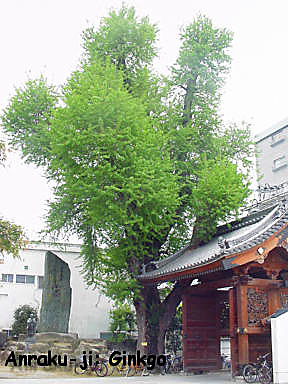Scientists like the ginkgo because it is a living fossil. It is the last remaining species of a gymnosperm division that flourished in the Jurassic, before the rise of flowering plants, birds, mammals, or lumberjacks. As the competition set in and the diversity of the ginkgo family dwindled, this last remaining species soldiered on. 200 million years after its debut, the tree, native to Eastern China, can now be found in urban environments all over the world. It is a popular decorative tree, particularly in far Eastern cultures such as that of China and Japan.
You don’t outlive a dinosaur without being tough. But I never realized just how tough until I found this webpage, courtesy of commenters at Jules & James blog. It describes a number of Ginkgo trees that were growing in Hiroshima when the atomic bomb was dropped. The tress described here were all between 1 and 2 km from ground zero. They were burned by the blast, torn apart by the shockwave and irradiated by the fallout. But it takes more than a nuclear weapon to kill a ginkgo. And a month after the attack, they resprouted. The trees are still alive today.

I don’t what sort of Mesozoic catastrophe forced these trees to evolve the ability to survive nuclear war. But survive they did, and I think that’s pretty cool. Even if we humans end up blasting ourselvels off the planet, and the only animals left are the cockroaches, at least they will have some shade. Not to mention the herbal supplements.
Nice! Thanks.
ReplyDeleteThey are beautiful trees; there is one outside my office. It is especially pretty in the fall as the leaves turn. And I never walk past it without considering that it is a survivor of the Mesozoic, and was almost gone before we gave it an expanded presence across the world.
ReplyDelete